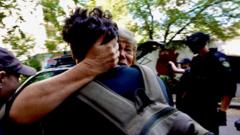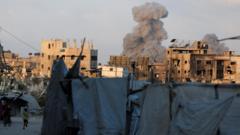On a rusted door atop a nine-story apartment complex, a poignant inscription reads, “FALL OF SAIGON.” Nguyen Van Hiep can vividly recall that moment: April 29, 1975, marked the collapse of the South Vietnamese government and the frantic final hours of war. From his vantage point next door, he observed as a U.S. helicopter awkwardly perched on the building's elevator shaft, barely fitting it within its confines.
Amidst the chaos, a throng of Vietnamese civilians clamored to ascend a narrow ladder toward the military chopper, desperately vying for a seat. An American in a white dress shirt attempted to assist a select few onto the helicopter. "Everyone was fighting to get up there," reminisced Hiep, whose father played a role in the maintenance of the Pittman apartment, previously home to the CIA's deputy director. "It was very chaotic; only residents of the building could go."
The scene he witnessed became emblematic of desperation, further immortalized by a photo captured by Hubert Van Es. However, an erroneous caption misidentified the photo's context, claiming it depicted evacuees from the U.S. Embassy.
Decades have passed since that historic day, and Ho Chi Minh City has undergone a dramatic metamorphosis. The wartime structures, such as the Pittman building, now stand as poignant artifacts within a bustling metropolis. These remnants serve as a powerful reminder of a tumultuous past, interwoven into the thriving narrative of modern Vietnam, showcasing a resilient spirit and a commitment to progress.


















